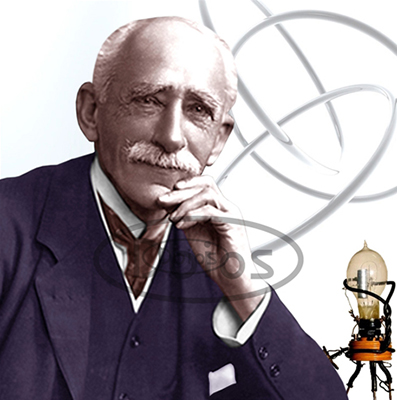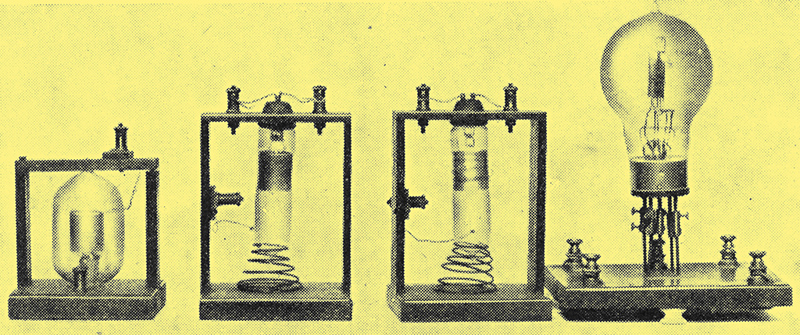|

The Late Sir Ambrose Fleming.
It is with regret we record the death of Sir Ambrose Fleming, DSc, FRS, in his 96th year, on April 18th. John Ambrose Fleming was educated in London at University College, Gower Street, and at the Royal College of Chemistry. He graduated BSc and worked at South Kensington under Professor F Guthrie and presented his first scientific. paper on 'The Contact Theory of the Galvanic Cell' at the inaugural meeting of the Physical Society in I874.
He relinquished in 1877 a teaching post at Cheltenham College, taken up in 1874, to go to Cambridge chiefly with the object of working under Clerk Maxwell in the then recently erected Cavendish Laboratory. There for two years, he says, 'I enjoyed Maxwell's stimulating teaching and intercourse'. In the year that Maxwell died, I879, Fleming was appointed scientific adviser to the Edison Telephone Co., and three years later to a similar position with the Edison Electric Light Co., formed to introduce incandescent electric lighting into this country.
In 1885 he was appointed Professor of Electrical Engineering at London University; a position he held until I926.
It was in October, 1904, that Fleming, then scientific adviser to the Marconi Company, whilst studying phenomena in incandescent lamps which had already been observed by Edison, discovered that a perfect device for rectifying the current induced in a receiving aerial existed in a high-vacuum tube containing two electrodes.
In the following month Fleming took out the fundamental patent, No. 24,850, covering the thermionic valve. The title of the patent was 'Improvements in Instruments for Detecting and Measuring Alternating Electric Currents'. This valve, which was soon used in practical wireless reception by the Marconi Company, was the first technical application of the emission of electrons from an incandescent conductor in vacuo.
The early Fleming valves had carbon filaments surrounded by a metal cylinder, but in 1908 Fleming found that tungsten wire possessed advantages in that it could be heated to a higher temperature.
Writing in Wireless World in I925, Fleming states: 'I was well aware that the anode current could be reduced by holding near the valve a permanent magnet, but unfortunately it did not occur to me in sufficient time that this could be controlled by inserting a grid or spiral wire or metal mesh cylinder between the anode cylinder and the filament, and giving to this grid small positive or negative potentials'.
Fleming was the author of many scientific papers and standard text books, amongst them, Fifty Years of Electricity (I921) and The Thermionic Valve (1919), published from the offices of Wireless World. Sir Ambrose received many awards and honours for his work in electrical physics. In I892 he was elected a Fellow of the Royal Society, and in I910 was awarded the Society's Hughes Medal. In 1921 he received the Albert Medal (RSA), in1928 the Faraday Medal (IEE), in 1931 the Duddell Medal (Physical Society), and in I935 the Kelvin and Franklin Medals. He was knighted in I929.

Some early types of Fleming thermionic valves.
|